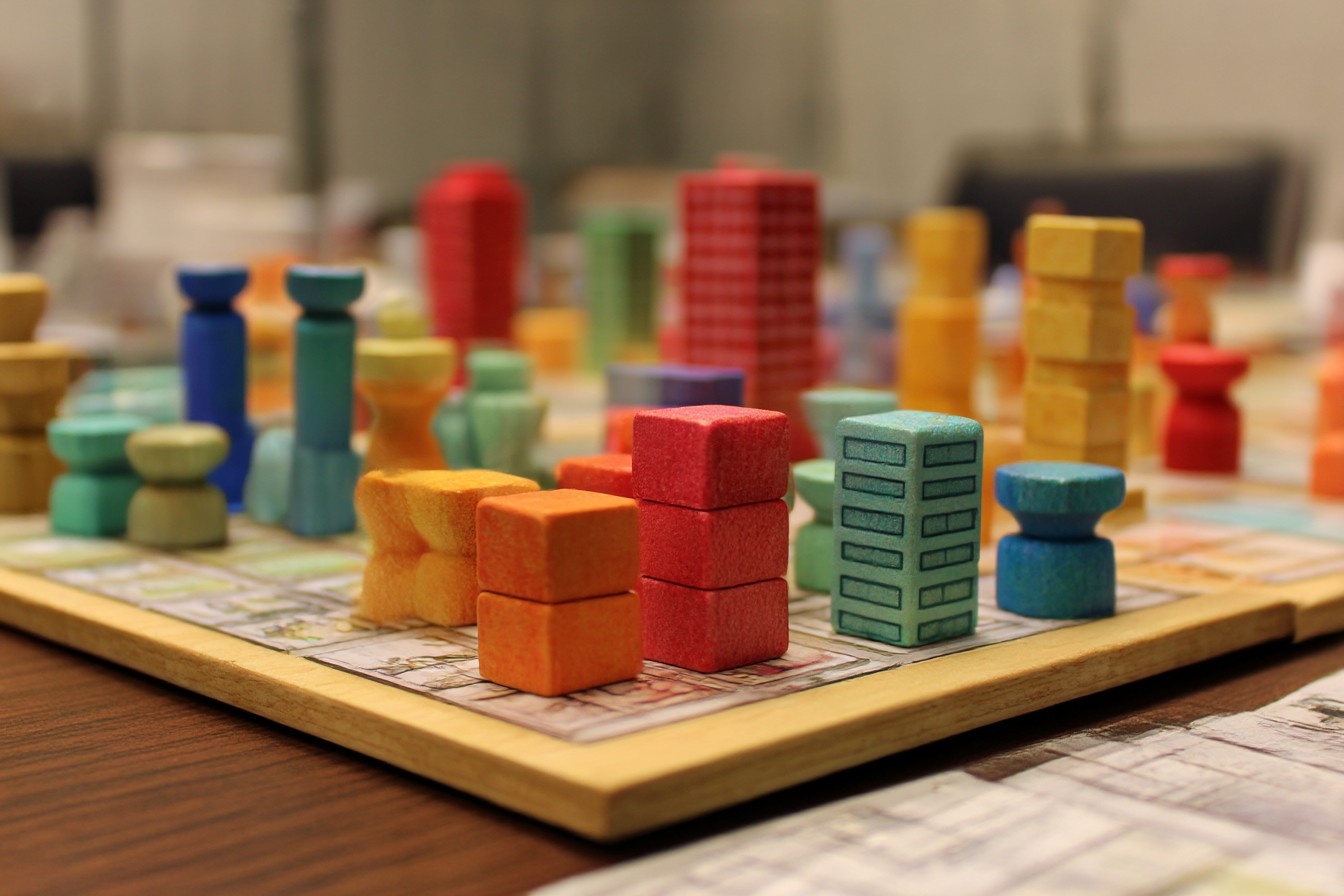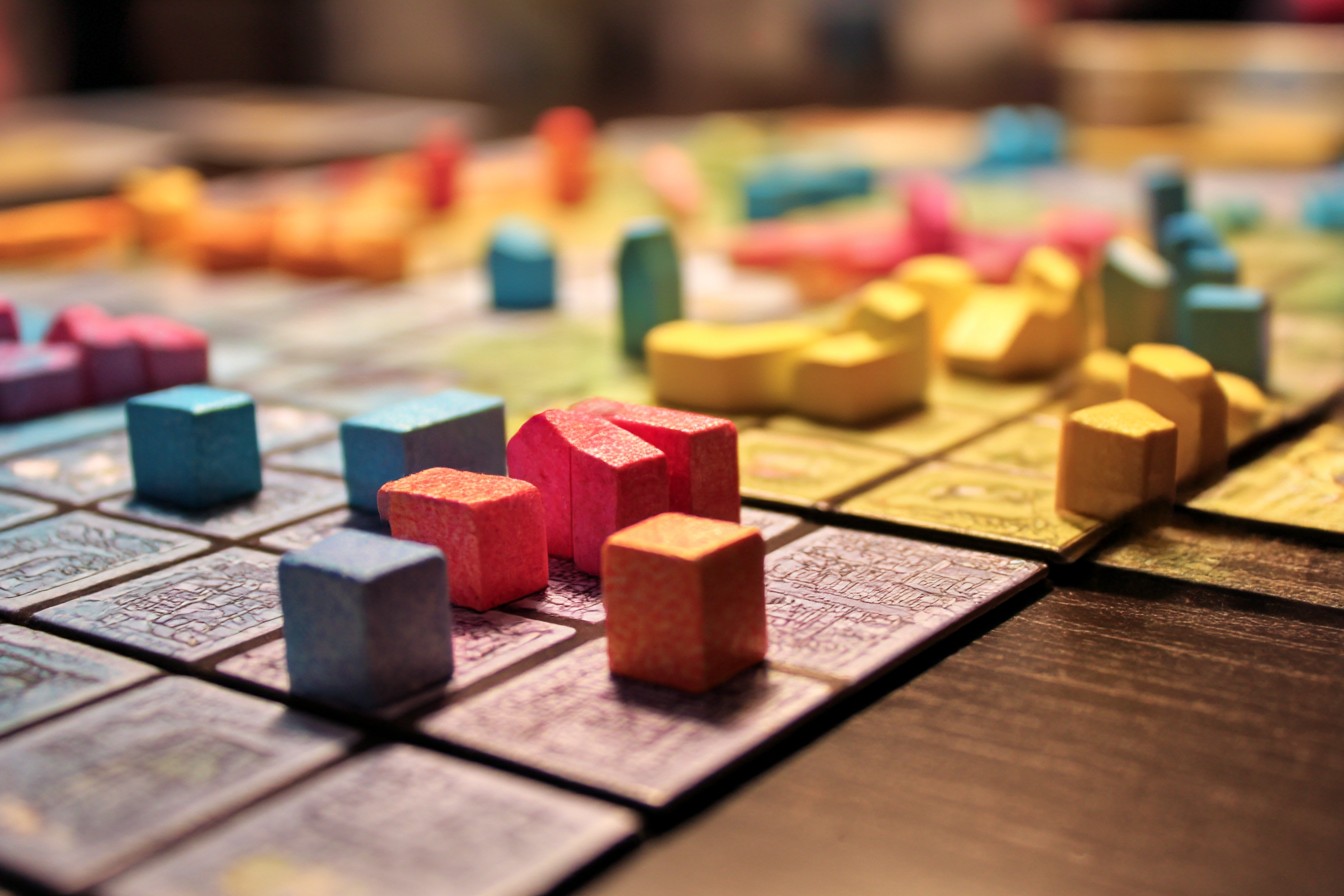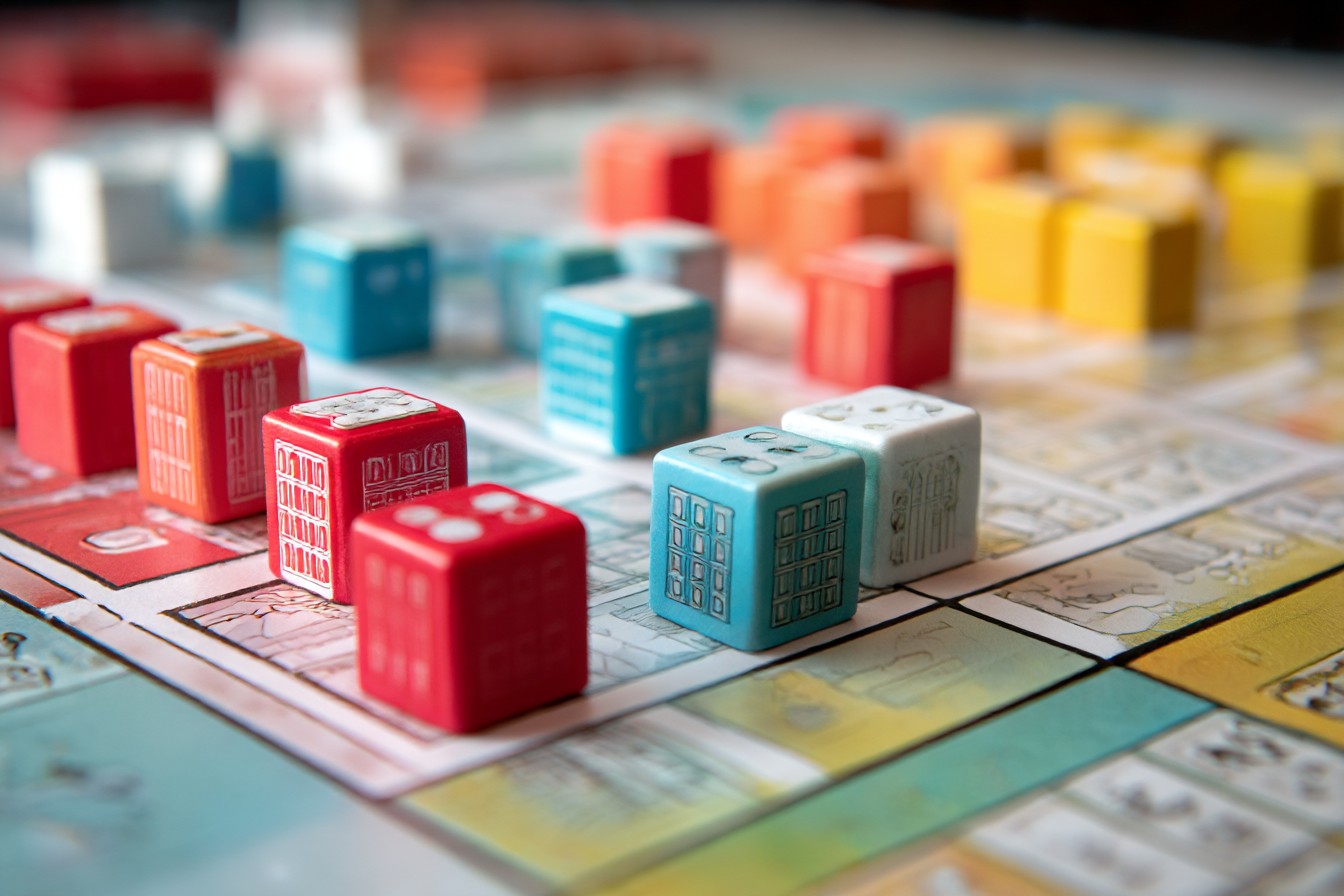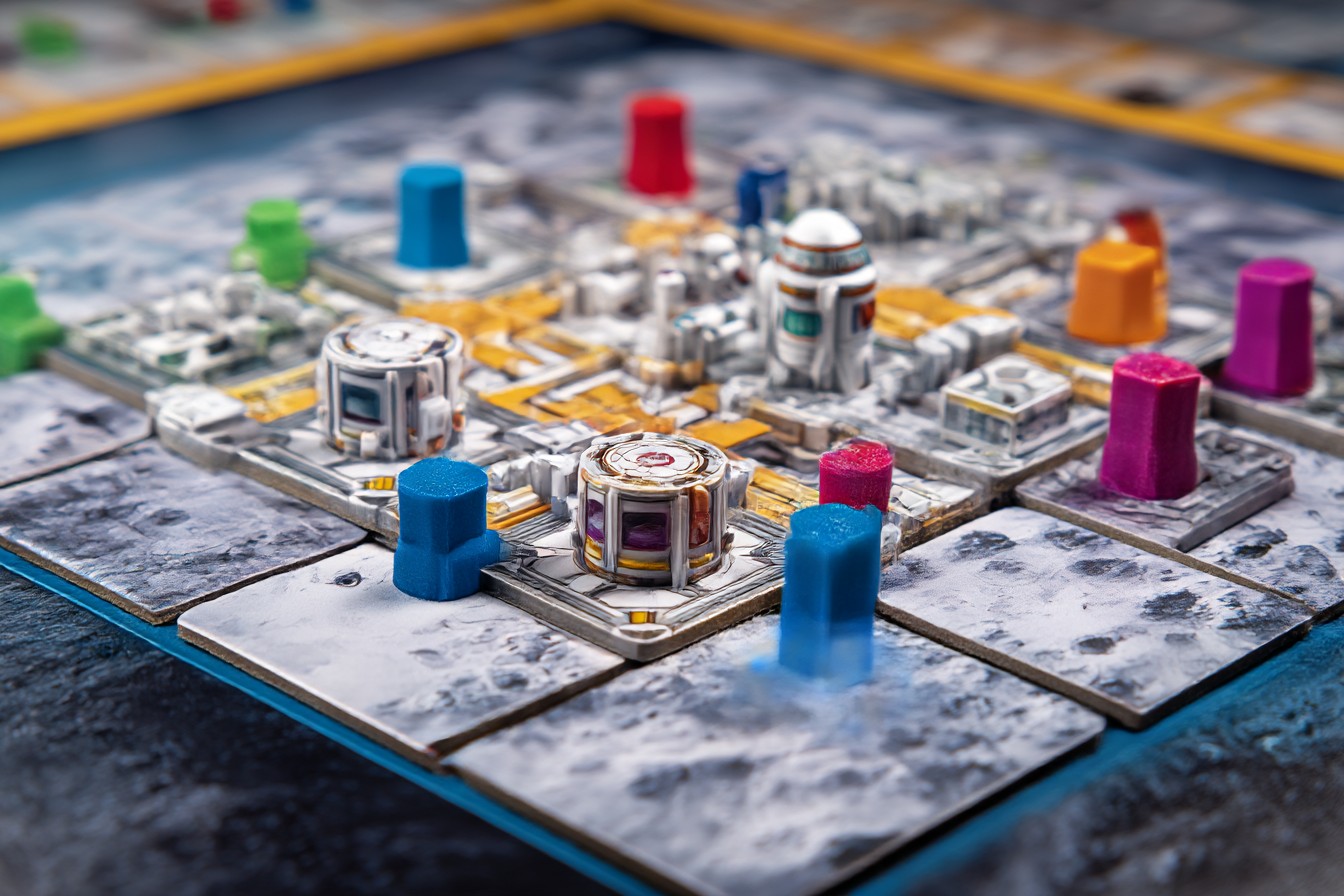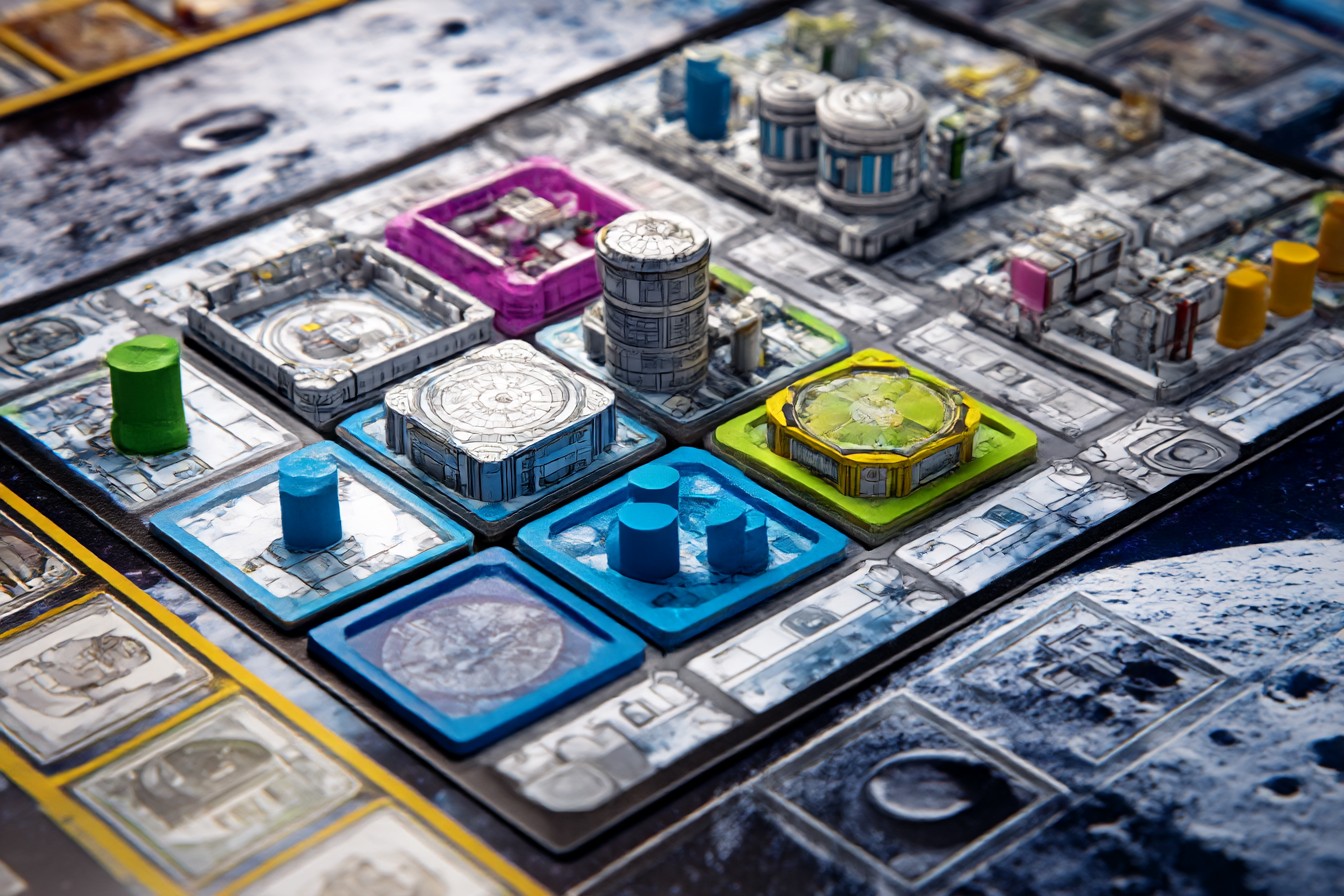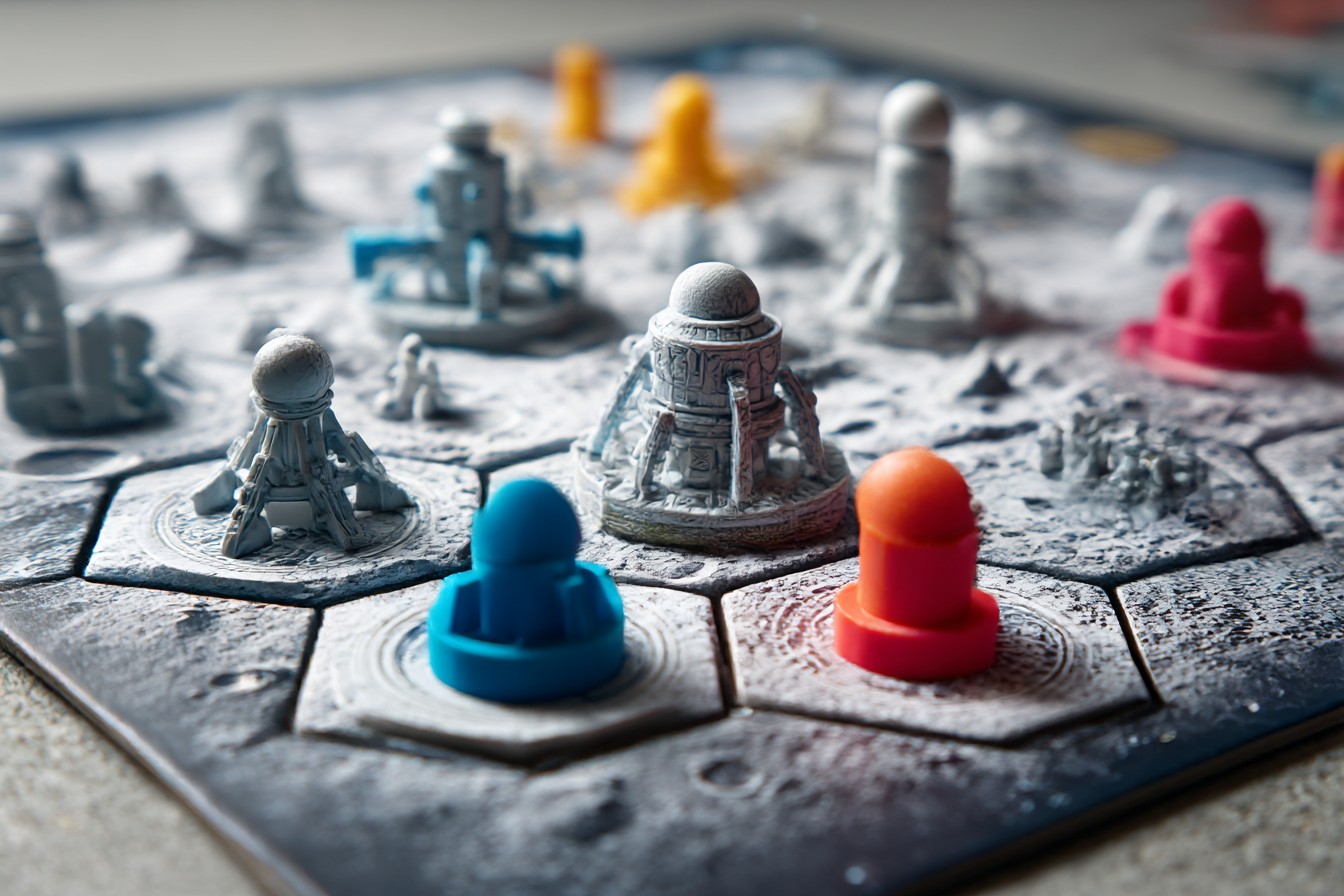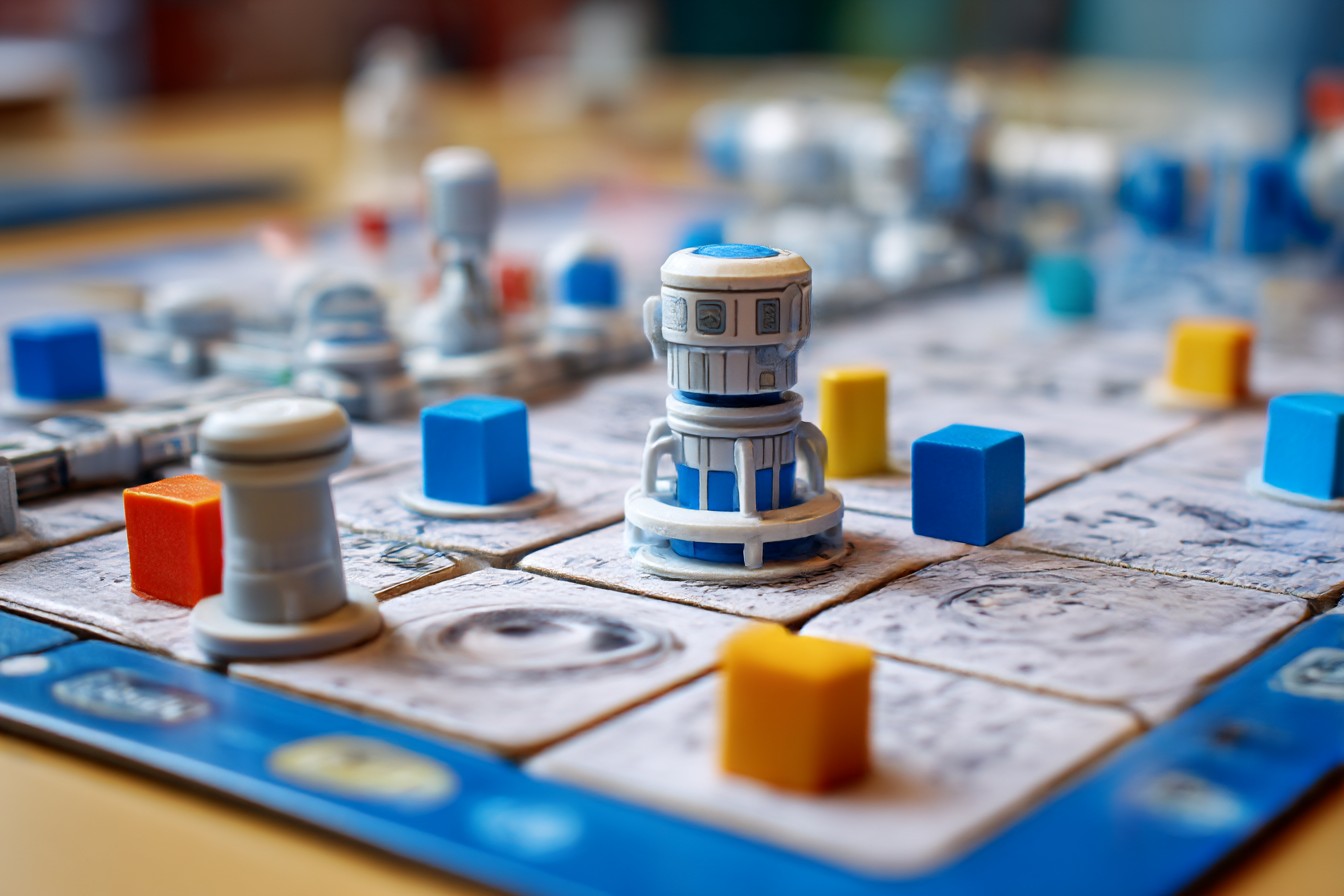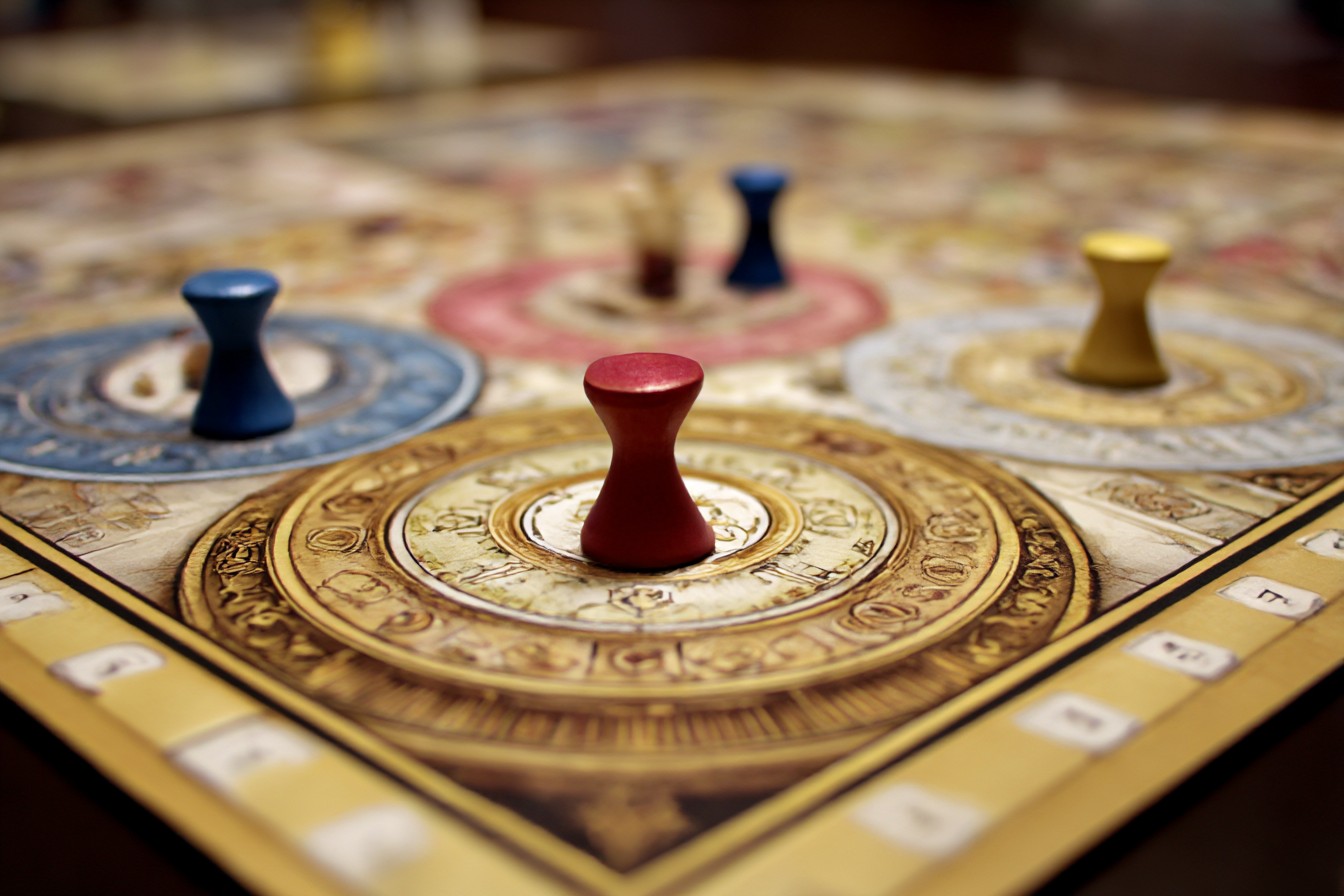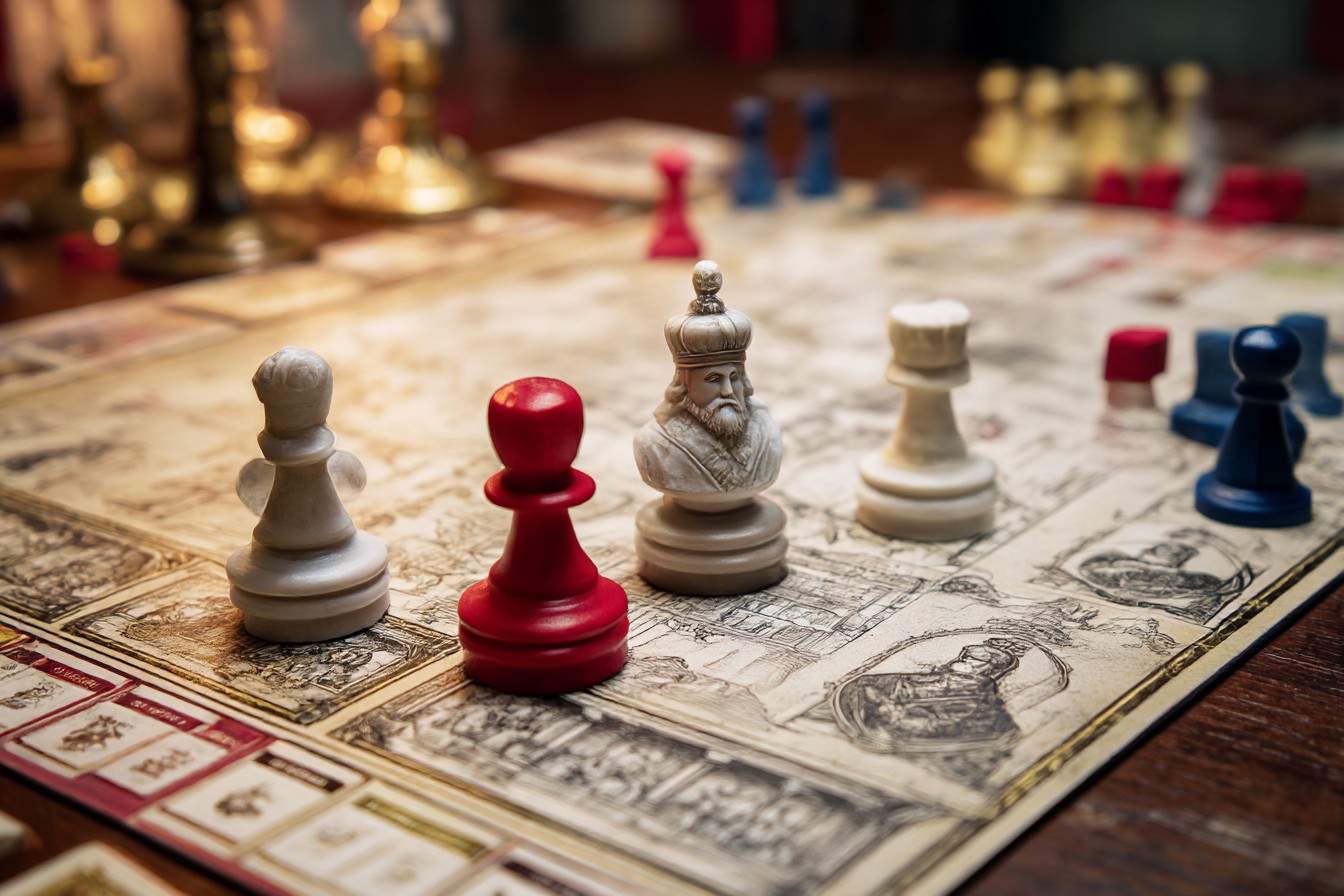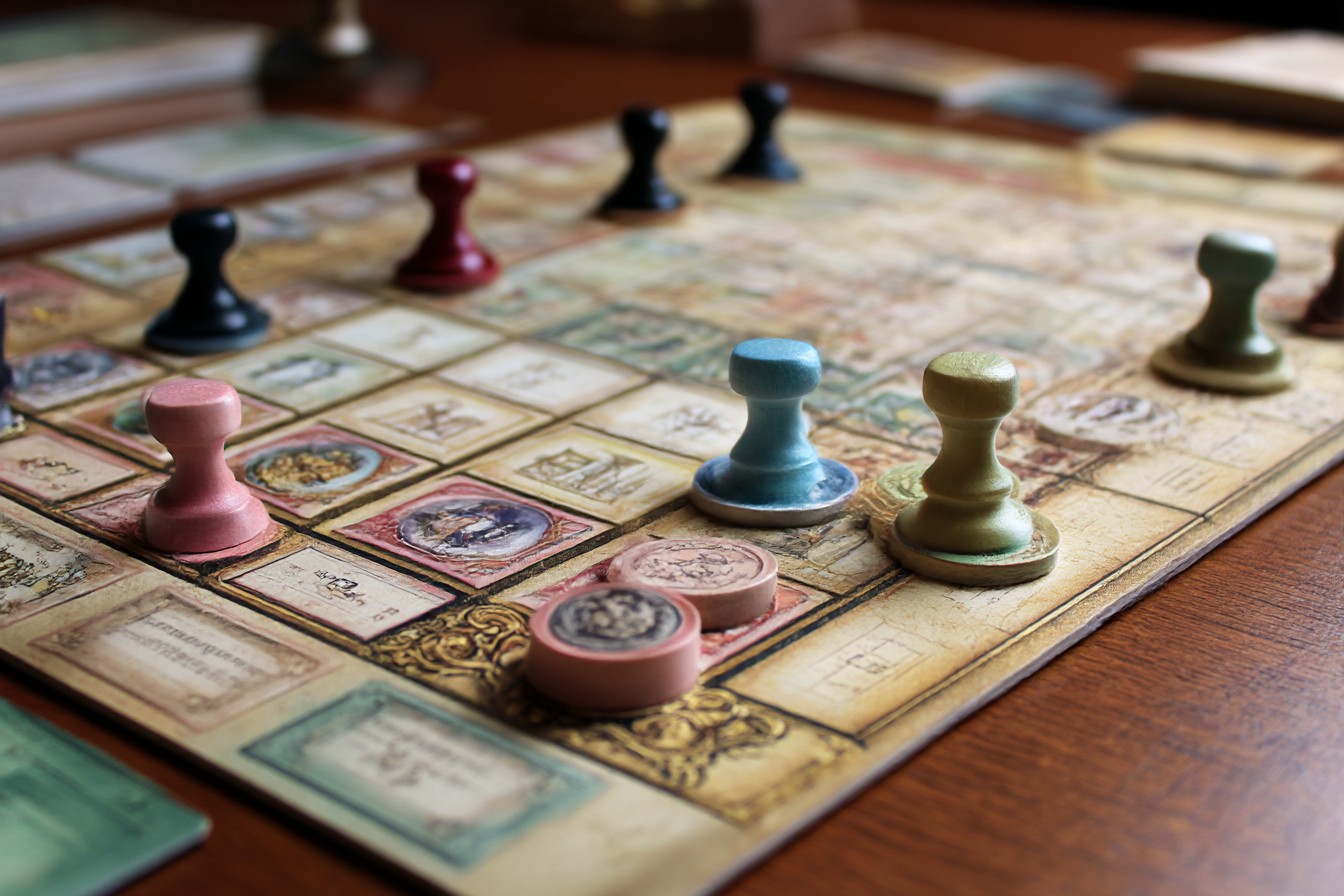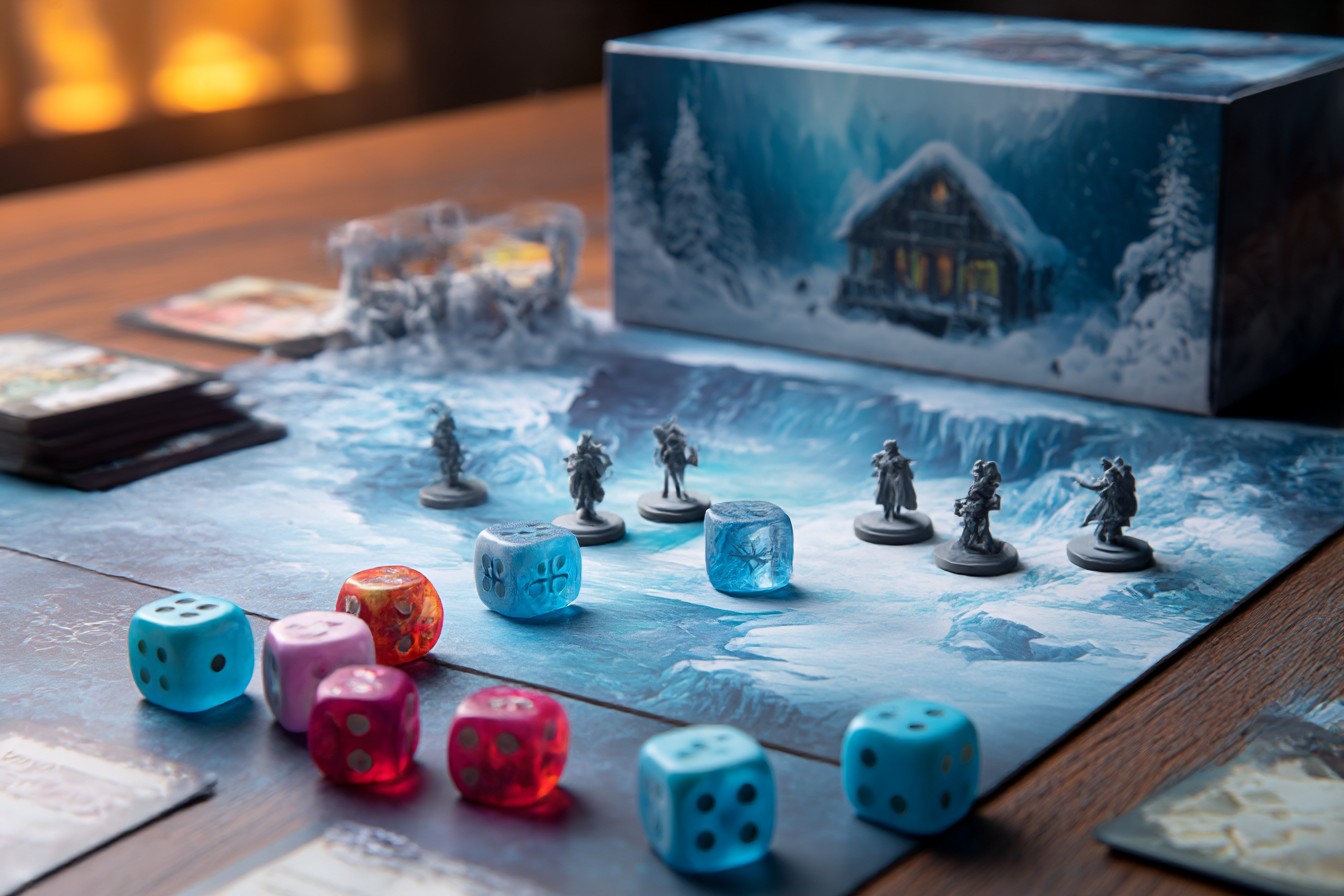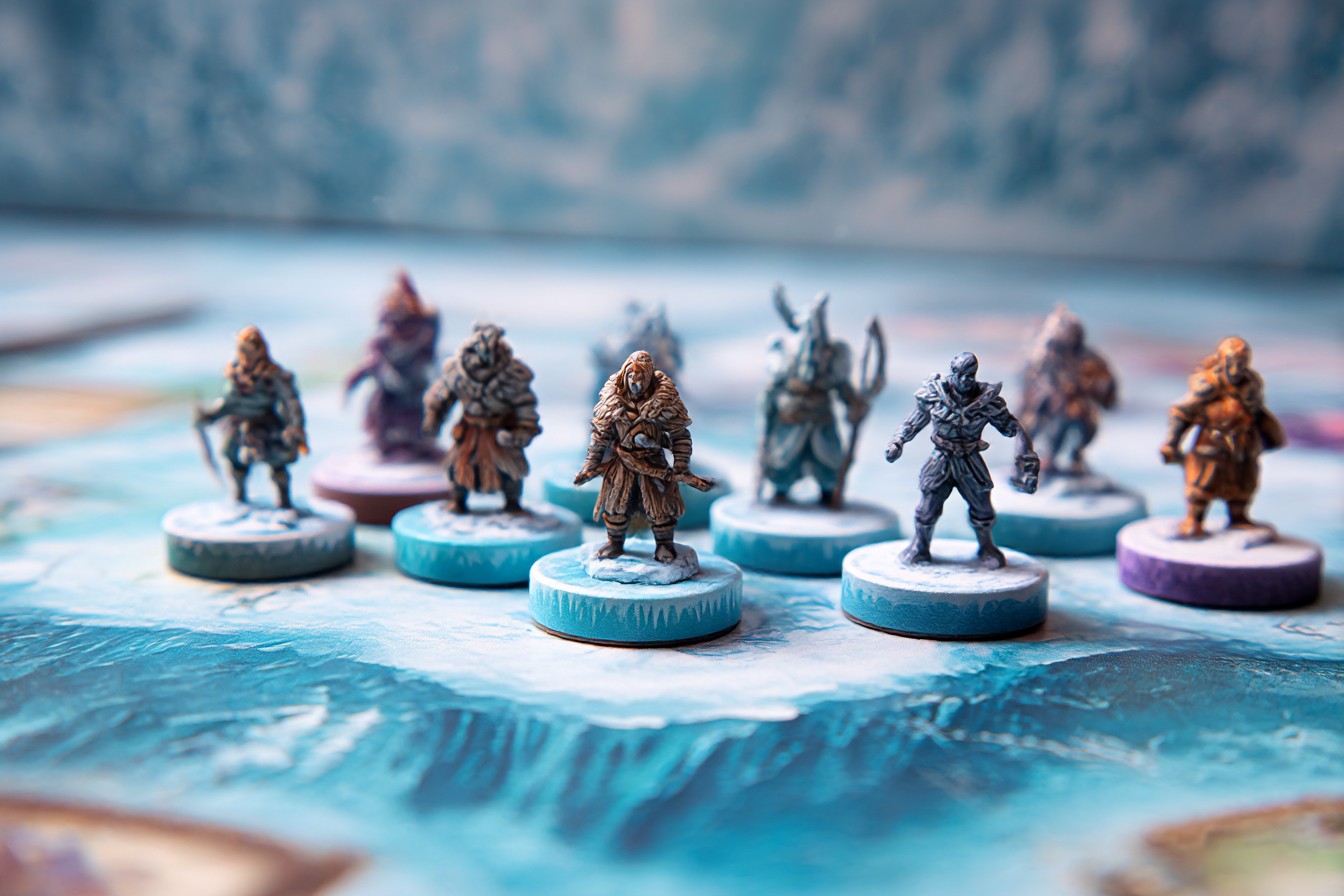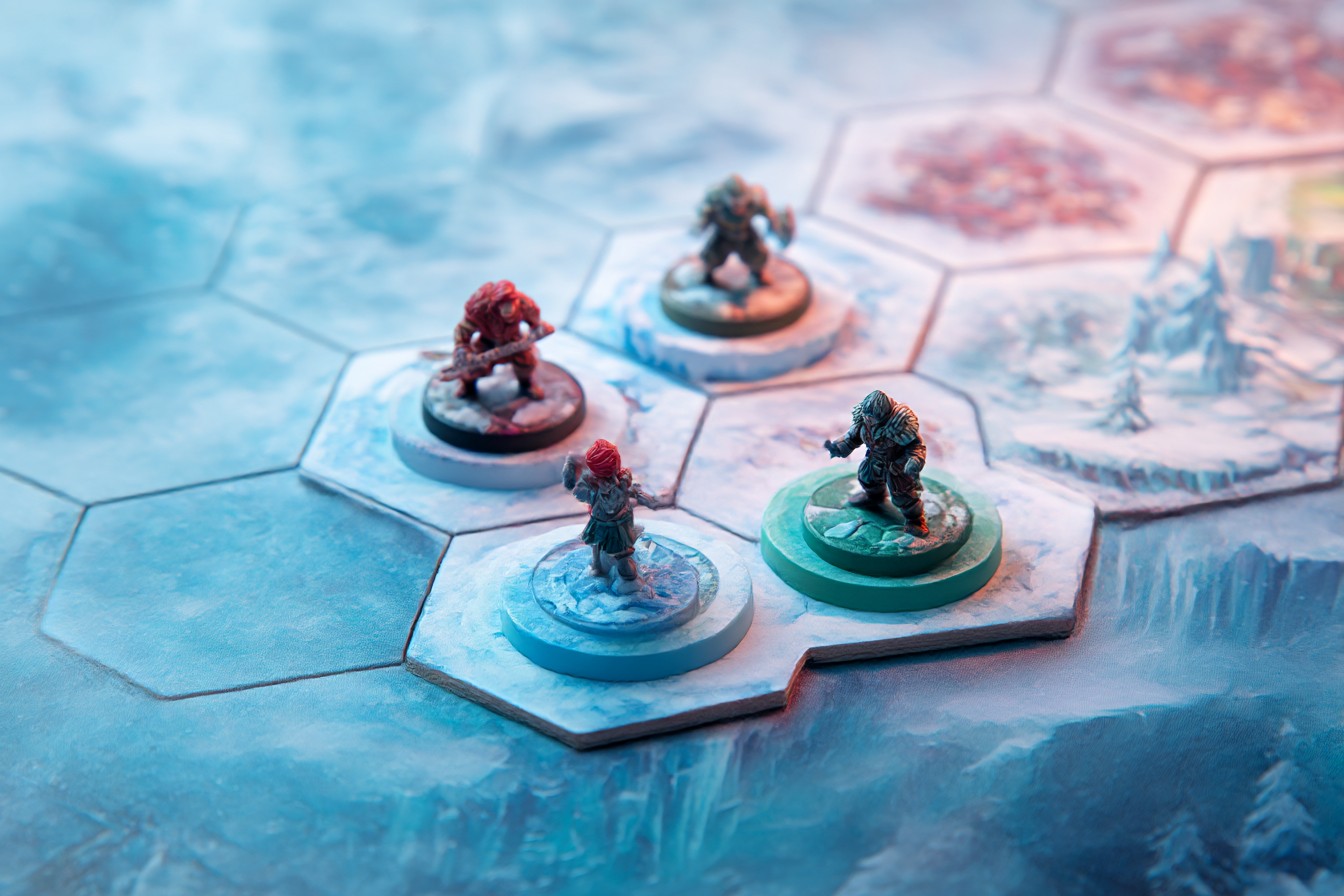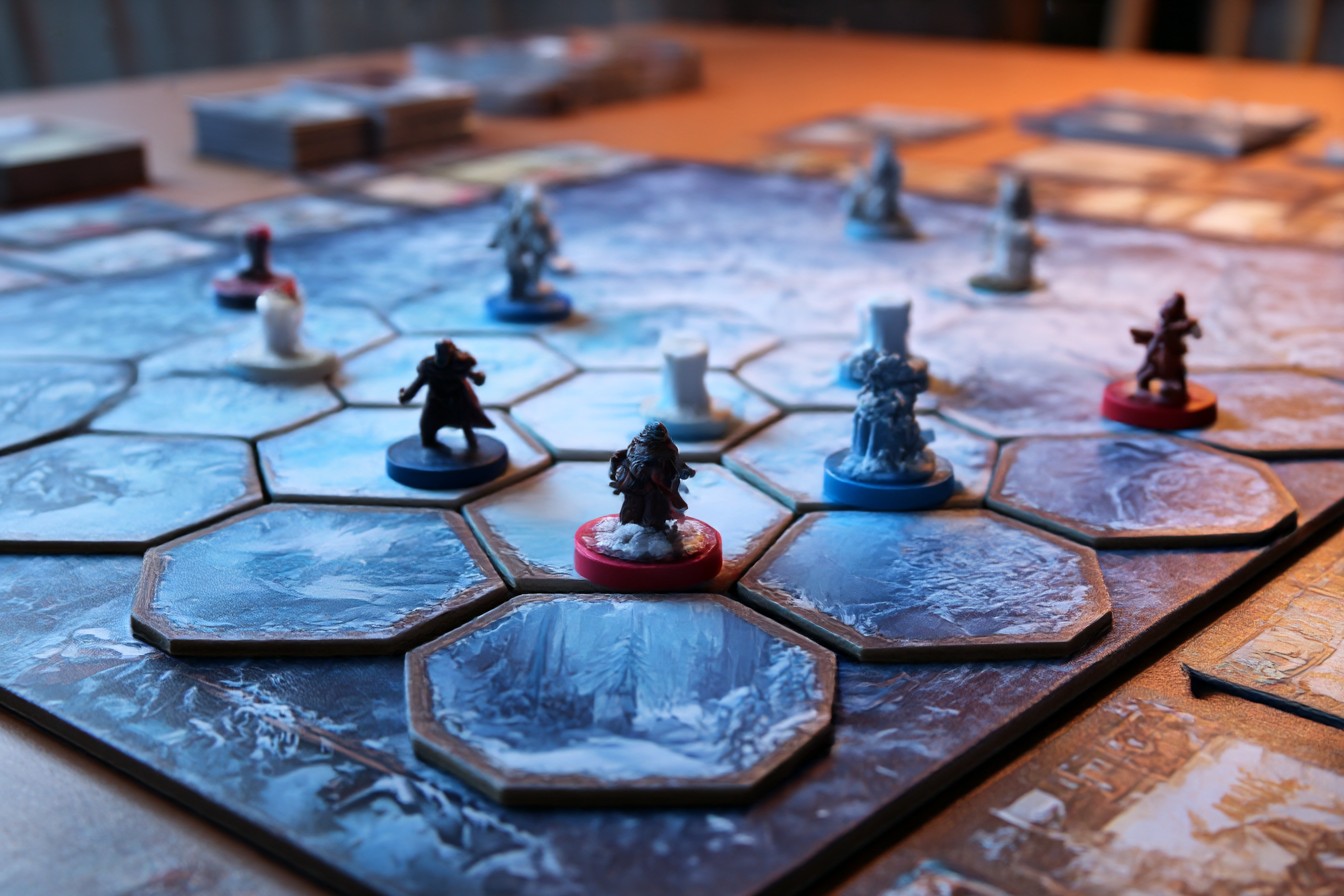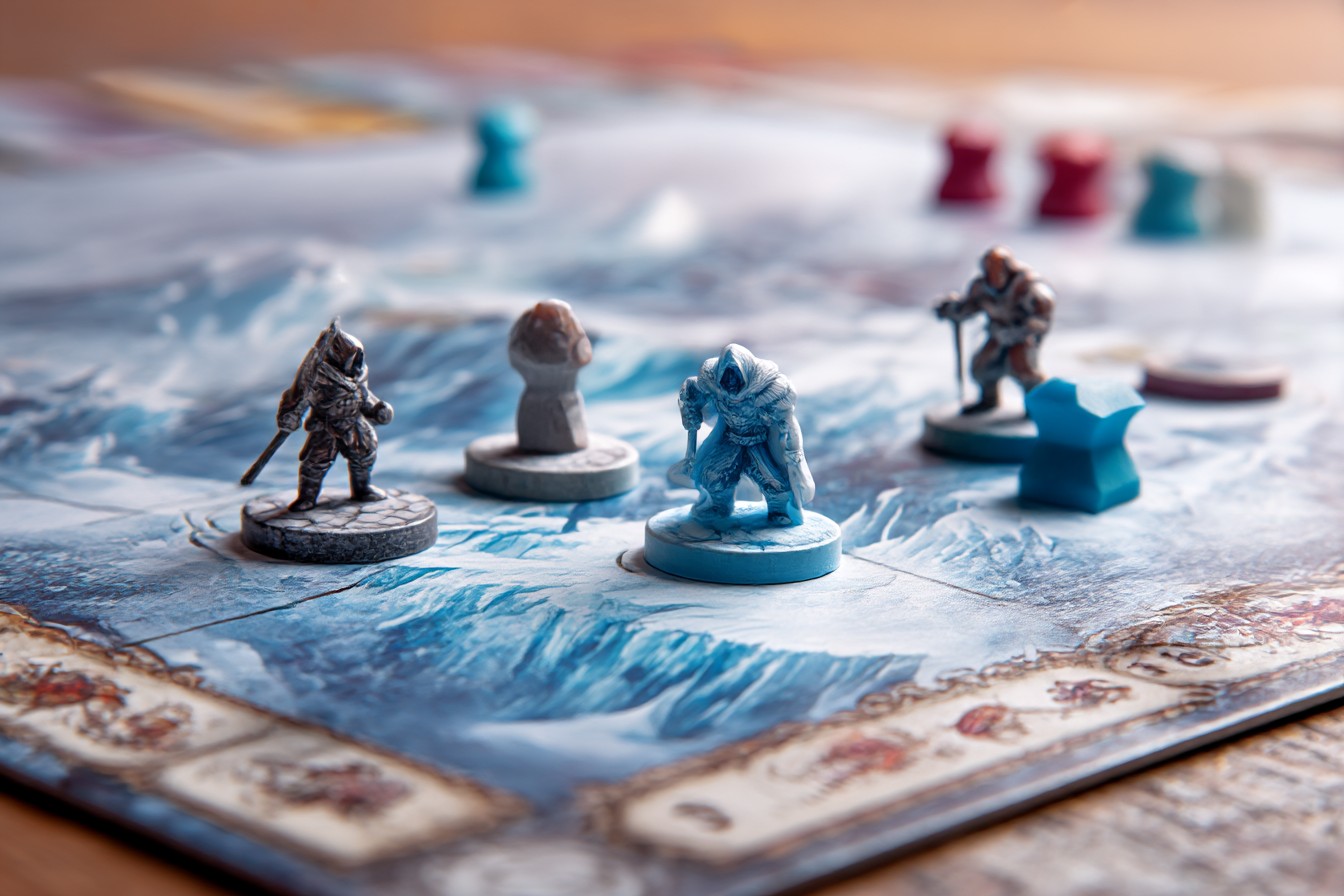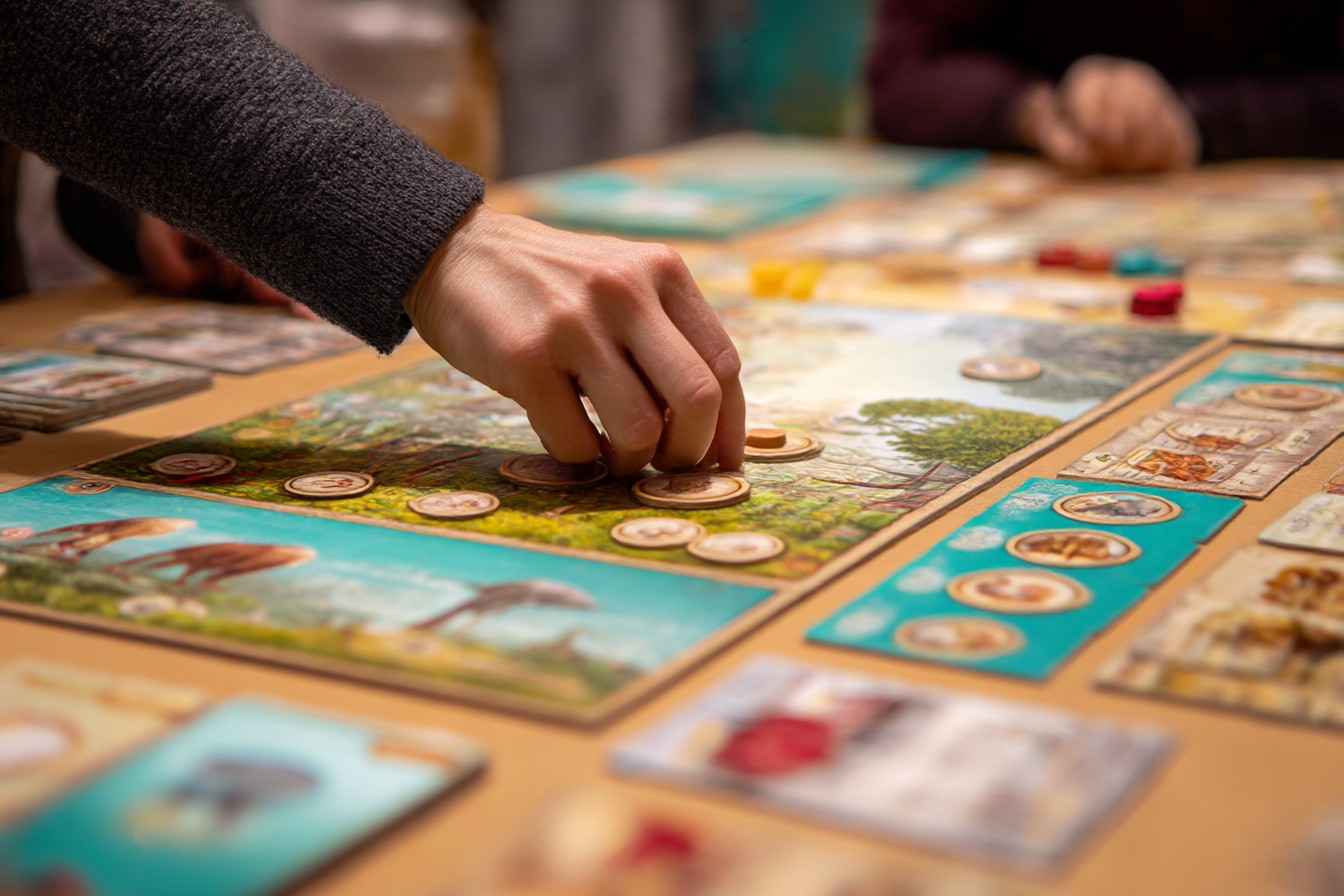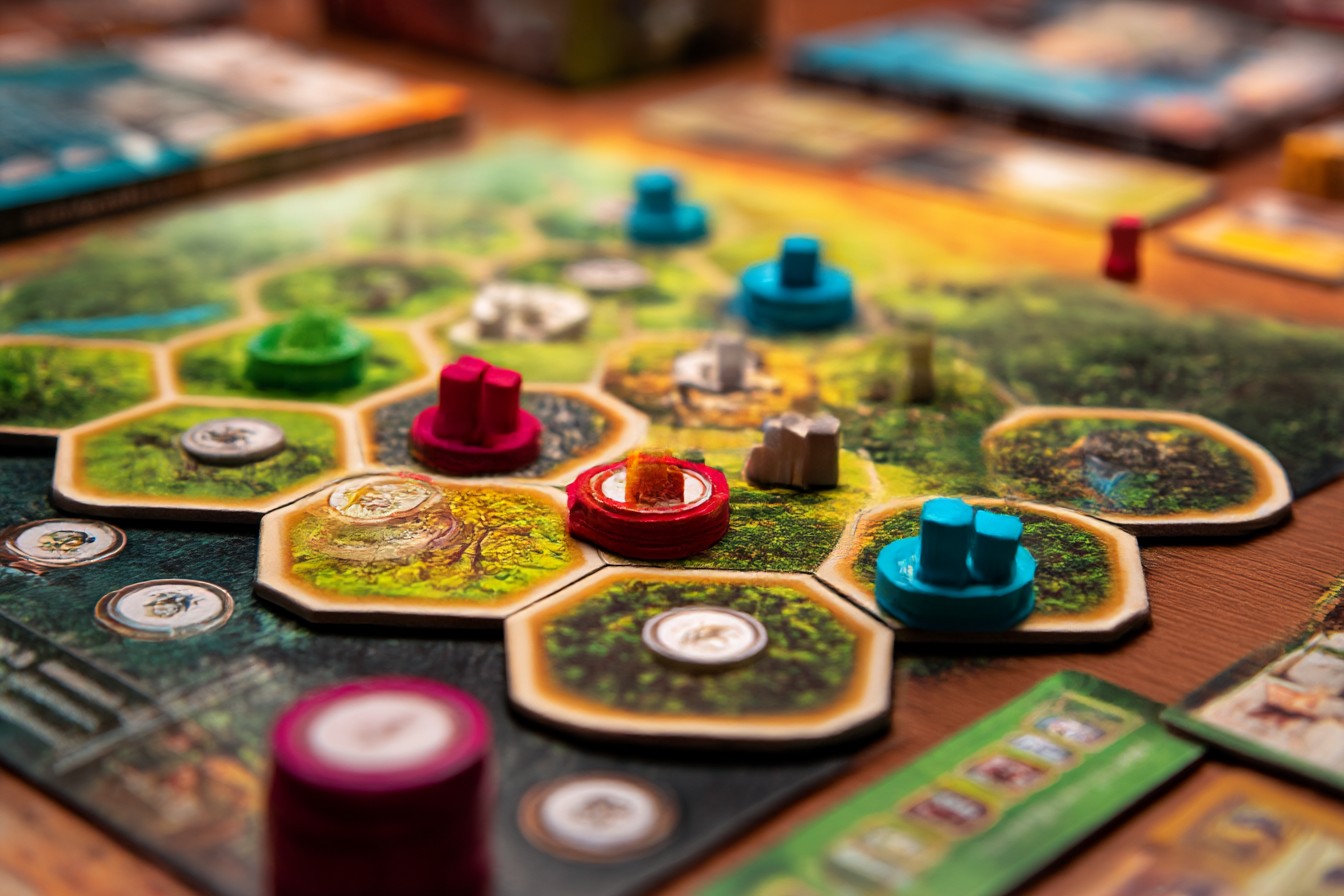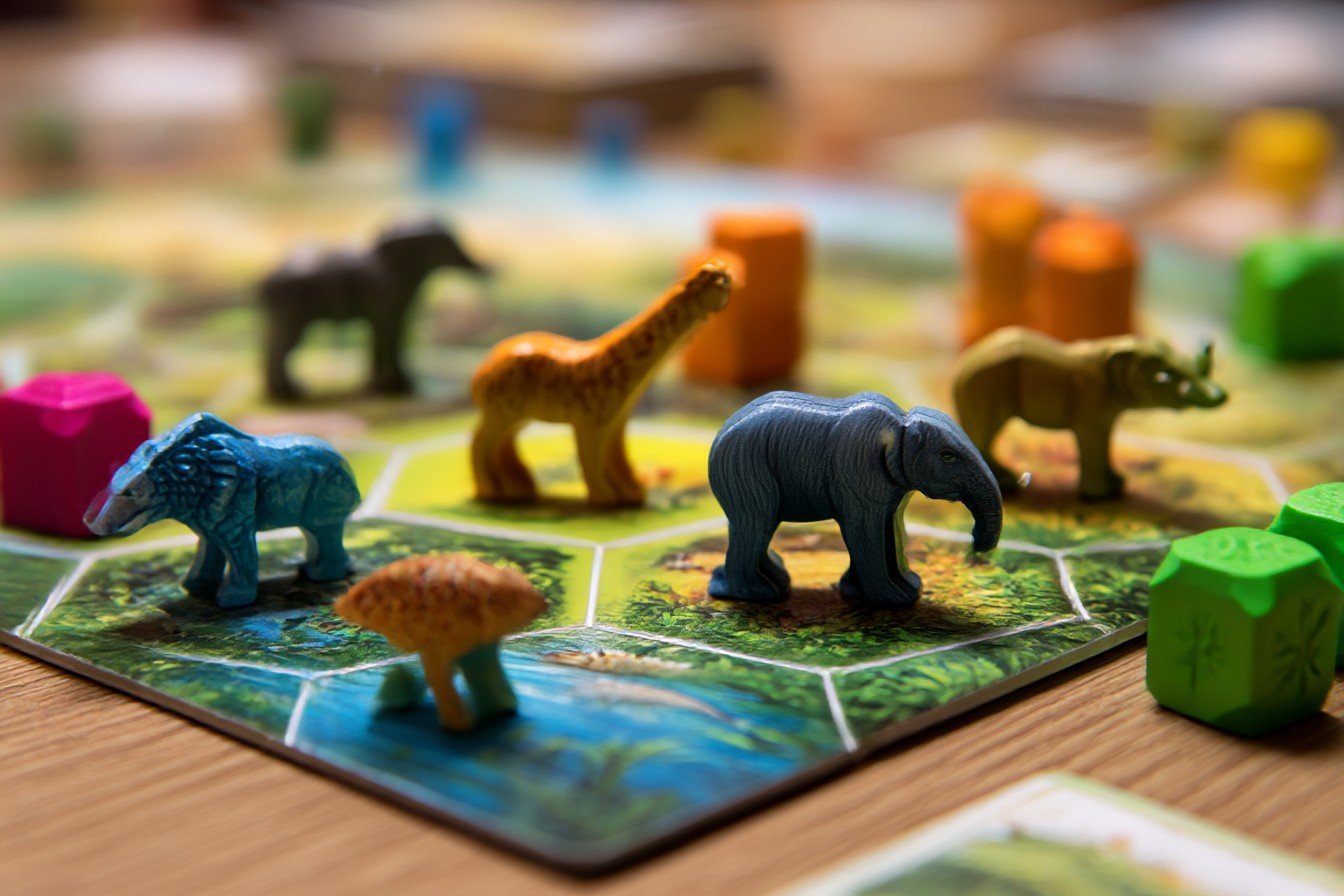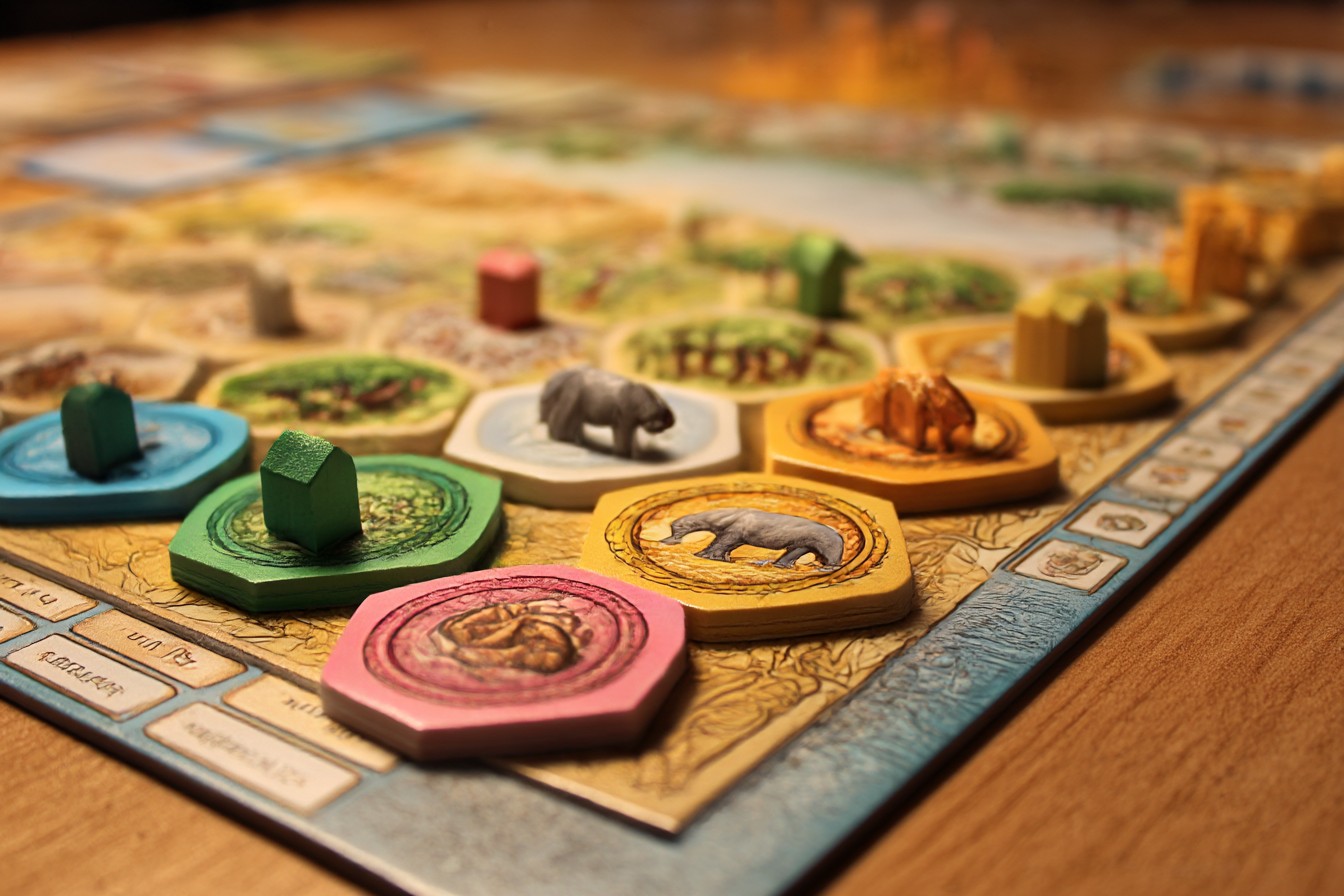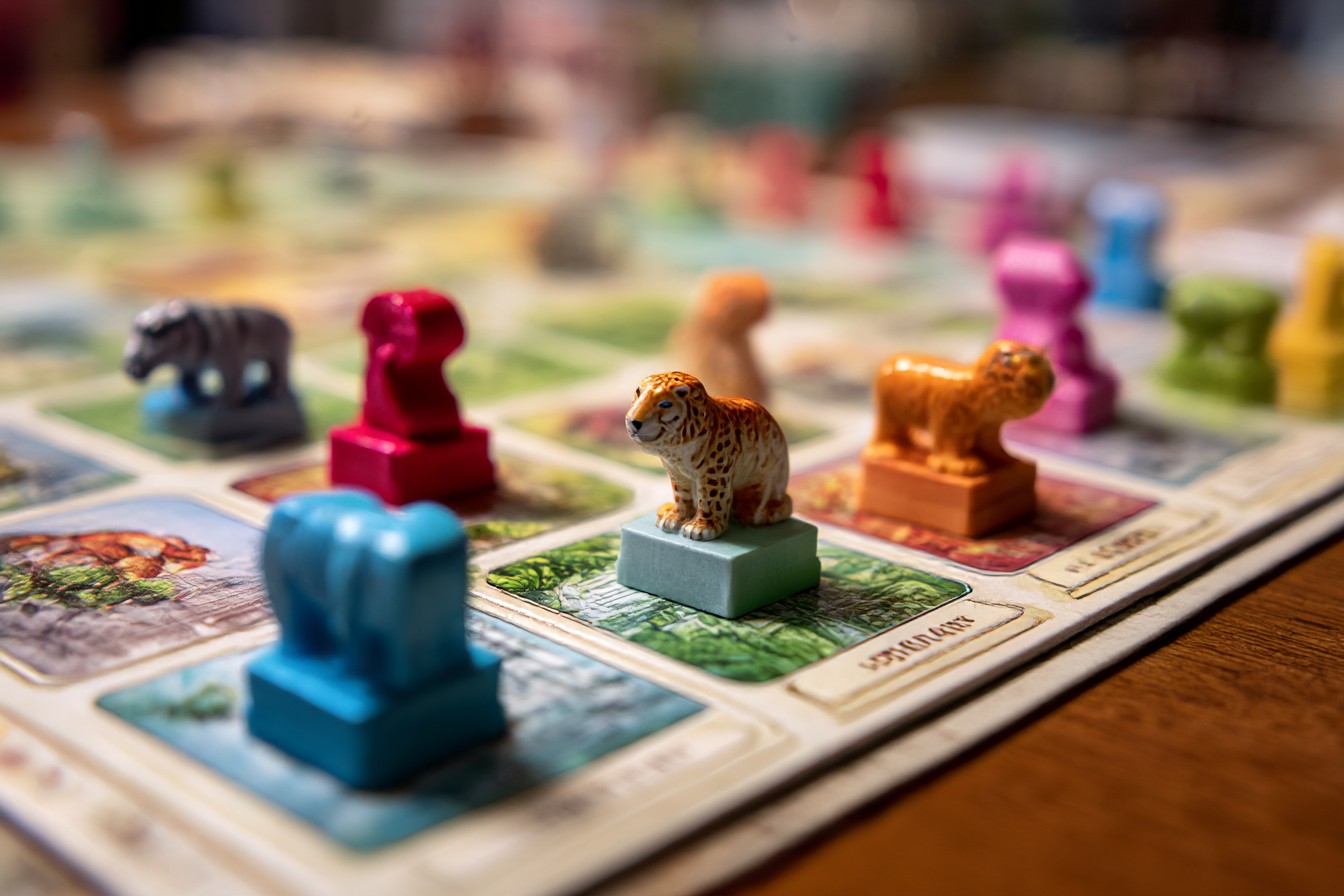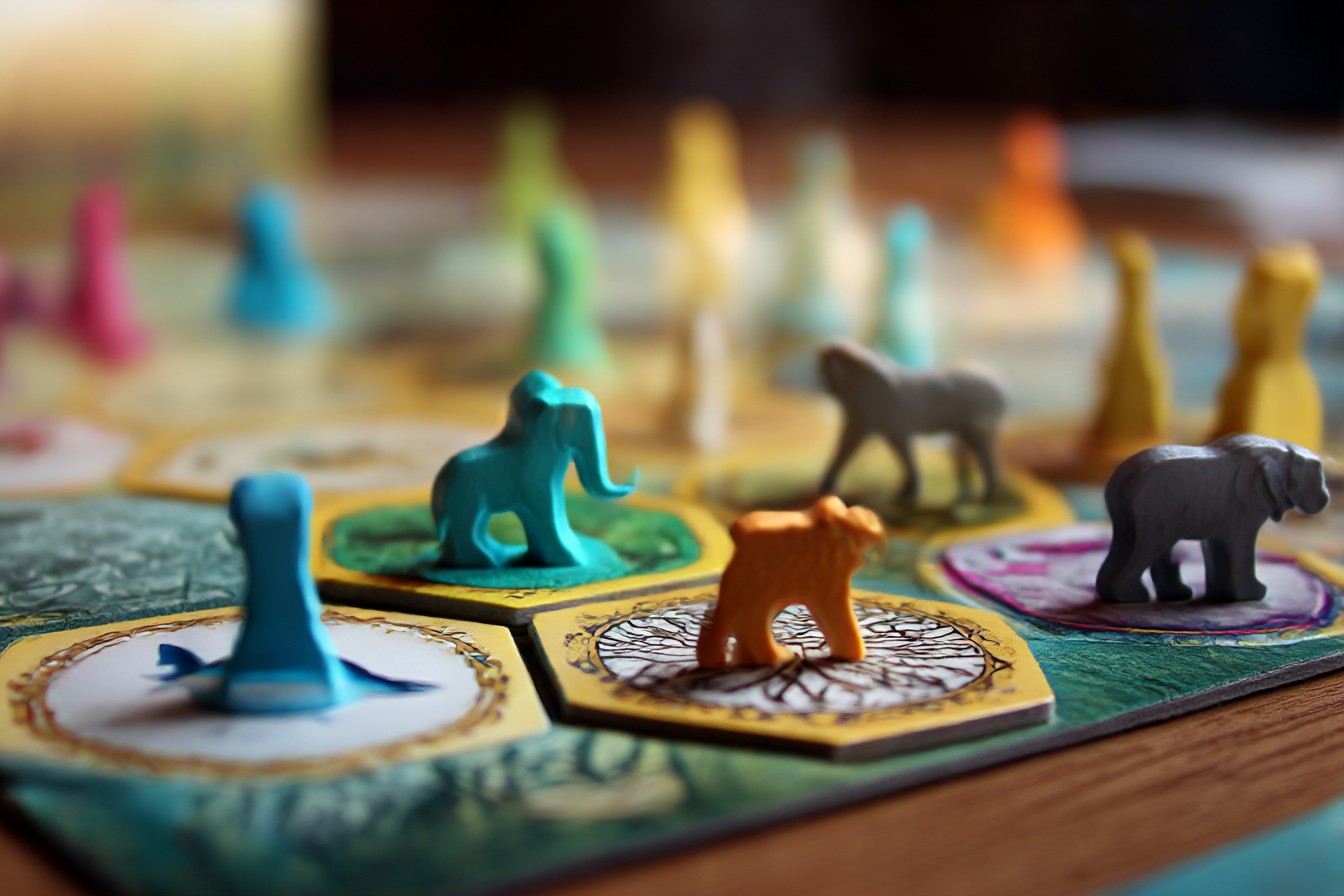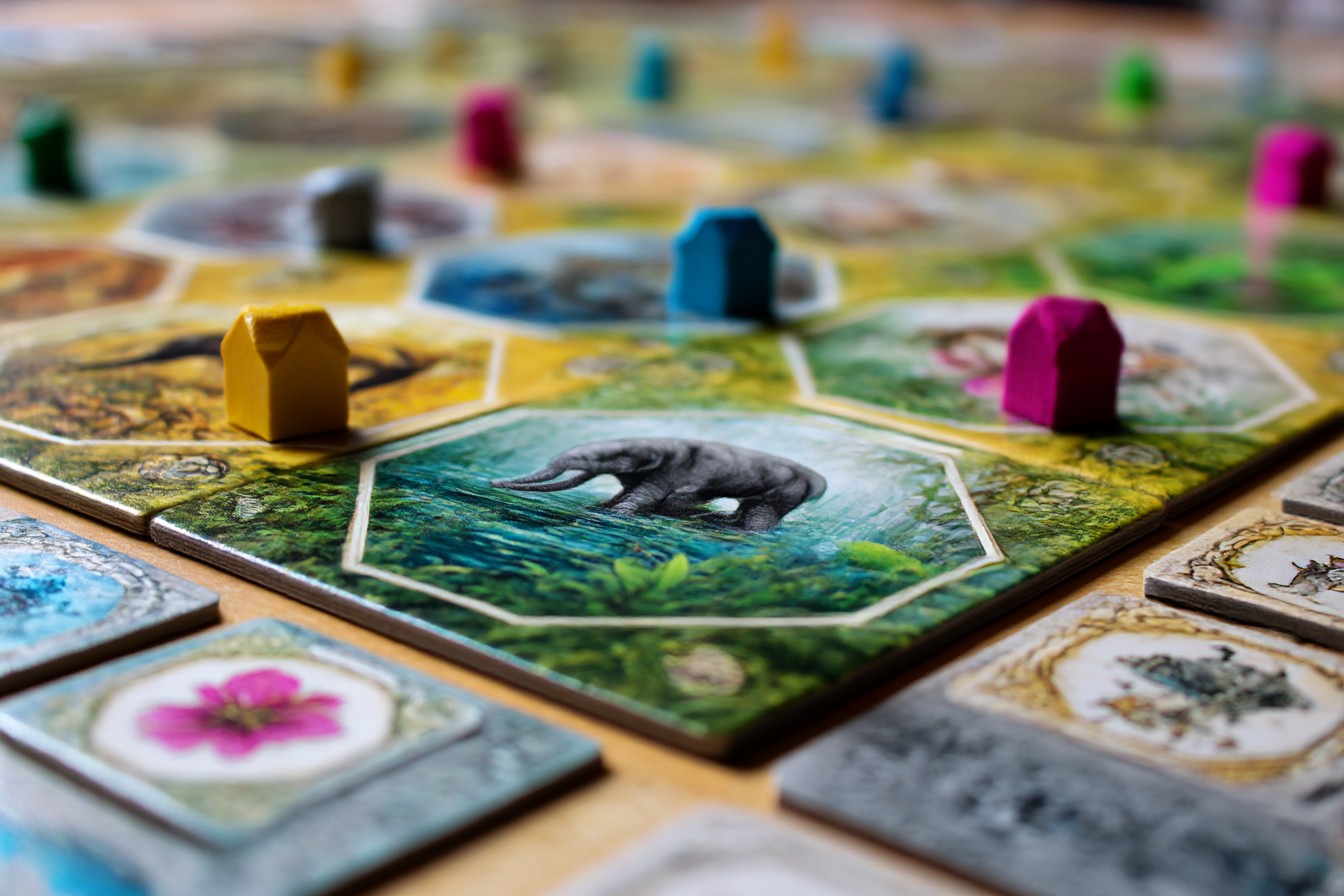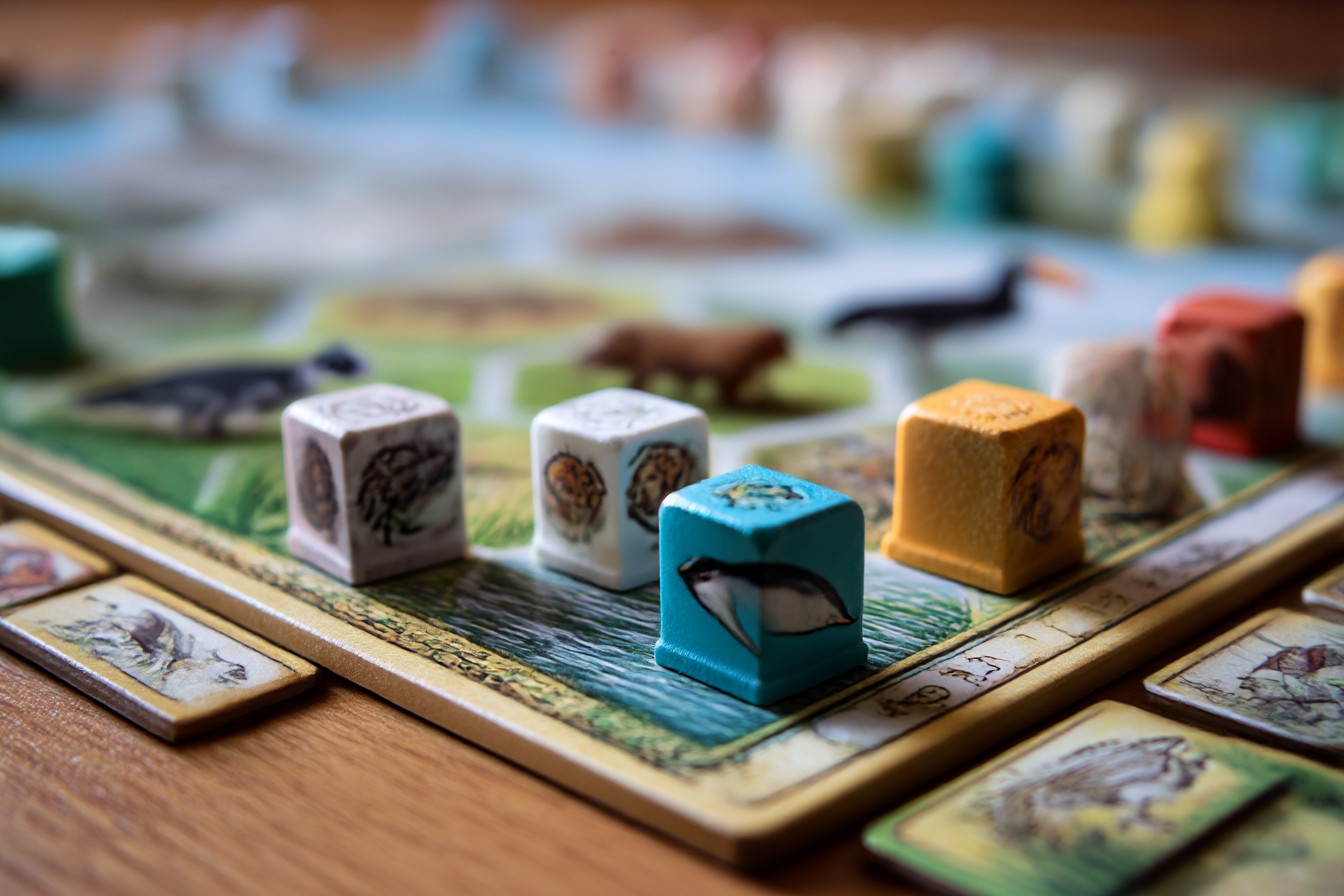The first time I cracked open My City, I made a rookie mistake. I got so excited about the immediate puzzle of fitting buildings onto my personal board that I completely missed the bigger picture. Three games later, my wife Linda was smugly tallying her points while I stared mournfully at a city that looked like it had been designed by a committee of drunk city planners with conflicting agendas. “This,” I announced to our gaming group, “is going to haunt me for the rest of the campaign.”
And it did. That’s the beauty and the terror of legacy games, isn’t it? Your decisions don’t just affect the next hour—they follow you for weeks or months of gameplay. My City takes this concept and distills it into something deceptively simple: a polyomino placement game where each building you add becomes permanent, for better or worse.
I’ve played through the full campaign twice now (yes, I bought a second copy—don’t judge me), and I’ve helped numerous readers navigate their own journeys through Reiner Knizia’s cleverly evolving city-builder. What I’ve learned is that there’s a delicate balance between scoring well now and setting yourself up for future success. It’s not just about maximizing points in the current episode—it’s about making decisions your future self won’t curse you for.
The campaign structure makes this particularly challenging. You’re initially working with limited information—you know certain scoring conditions for the current episode, but you’re not entirely sure how the game will evolve. This creates a fascinating tension between immediate optimization and leaving yourself flexibility for whatever comes next.
During my second campaign, we played with another couple who approached the game completely differently than we did. James, an architect by training (which you’d think would give him an advantage), focused entirely on maximizing each individual episode. His wife Sara took a more balanced approach. By episode 8, the difference was striking—Sara’s city had coherent districts with space for future development, while James had painted himself into several corners with buildings that scored well initially but created awkward gaps and limitations.
So what lessons have I learned from these two playthroughs that might help you avoid my first-game mistakes? Let me share some thoughts (without specific spoilers for those who haven’t started their campaigns yet).
First and most important: respect the river. The central river running through your board isn’t just a scenic feature—it’s the backbone of your entire city development. In my first campaign, I treated it almost as an annoying obstacle, placing buildings right up against its edges whenever possible to maximize immediate space usage. Big mistake. The river areas end up being critically important in multiple ways throughout the campaign, and having breathing room along its banks gives you strategic flexibility that you’ll definitely want later.
Next, consider building in clusters by type from the beginning, even if there’s no immediate scoring benefit. I can’t tell you exactly why (spoilers!), but trust me on this one. Having your residential buildings somewhat grouped, your commercial structures in their own district, etc., will serve you well as new rules and scoring conditions emerge. Think about it like real urban planning—there’s a reason we don’t typically build factories next to elementary schools.
My friend Tom, who’s played through the campaign three times (and yes, we tease him mercilessly about it), has a theory he calls the “40% rule”—never fill more than 40% of any quarter of your board during the first third of the campaign. This creates a nice balance between scoring enough to stay competitive while maintaining flexibility for future episodes. I’ve found this to be pretty solid advice.
Something that’s easy to overlook: the permanent buildings you place are, well, permanent—but the SPACES between them are just as important. In episode 4 of my second campaign, I had a moment of clarity when I realized I wasn’t just placing buildings; I was also creating the negative space that would constrain all my future decisions. This shifted my thinking from “how do I fit this piece optimally now?” to “what pattern of open spaces will this leave me with?”
Linda, by the way, is annoyingly good at this game. Her background in quilting gives her an intuitive sense of pattern recognition and spatial relationships that I can’t match despite my supposedly analytical mind. During our second campaign, she developed what I now call the “edge strategy”—she consistently left the outer edges of her board more open than the center, creating a flexible perimeter that could adapt to whatever new scoring conditions emerged. It worked brilliantly.
The hardest skill to develop—and I’m still working on this—is knowing when to deliberately take a short-term point hit for long-term gain. In episode 7 of my second campaign, I passed up a placement that would have scored me an extra 4 points because it would have created an awkward 3-space gap that I knew would be nearly impossible to fill efficiently later. My gaming group thought I was crazy… until two episodes later, when that flexibility allowed me to place a new building type perfectly while they all struggled with their constrained boards.
The stickers that mark permanent buildings create such an interesting psychological effect too. In most games, a suboptimal move is forgotten as soon as the game ends. In My City, that building sits there, game after game, silently judging you. During our first campaign, James developed what we called his “building of shame”—a poorly placed structure from episode 3 that he had to work around for the rest of the campaign. It became a running joke, with someone inevitably pointing to it each game and asking, “How’s that working out for you, James?”
Weather is another element that can trip up new players. The alternating sunny and rainy weather from episode to episode creates a rhythm to the campaign that rewards thinking ahead. After a sunny episode, you KNOW the next one will be rainy, which affects scoring in established patterns. Use this knowledge! I’ve seen too many players optimize purely for the current weather and then struggle in the following episode.
One of the most satisfying aspects of the game is seeing how your city develops its own character over time. By the end of our second campaign, each player’s board told a story. Sara’s city was beautifully balanced with distinct districts. James had a city with brilliant individual areas but awkward transitions between them. Linda’s had an elegant flow that somehow managed to adapt to each new challenge. And mine? Well, it was definitely better than my first attempt, but still had that one questionable district where I’d gotten greedy in episode 5 and paid for it thereafter.
If you’re just starting your My City journey, I envy you. There’s something magical about watching your city evolve over the course of the campaign, with each permanent decision adding to its unique character. Just remember—that building you’re about to place isn’t just scoring points today. It’s shaping all your future decisions in ways you can’t fully predict.
I’d love to offer more specific strategic advice, but the joy of legacy games is in discovering their evolving nature yourself. What I can tell you is that a balanced approach, respecting the river, building in logical clusters, maintaining flexibility through careful management of open spaces, and occasionally sacrificing short-term gains for long-term potential will serve you well.
And hey, even if you make mistakes (and you will), that’s part of the fun. Those suboptimal buildings that haunt you for the rest of the campaign? They become part of your city’s story. My gaming group still brings up “The Great Tree Fiasco of Episode 9” from our first campaign, when we all misunderstood a new rule and made placements we regretted for the remaining episodes.
The legacy nature of My City captures something true about real urban development—cities aren’t built in a day, and they carry the marks of both wise planning and regrettable decisions in their final form. Just like real cities, there’s no such thing as a perfect final board, only the unique metropolis that emerges from your series of choices, constraints, and occasional lucky draws.
Now if you’ll excuse me, I need to go check if there’s a third copy of the game on sale anywhere. I’ve got some new theories I want to test out…

